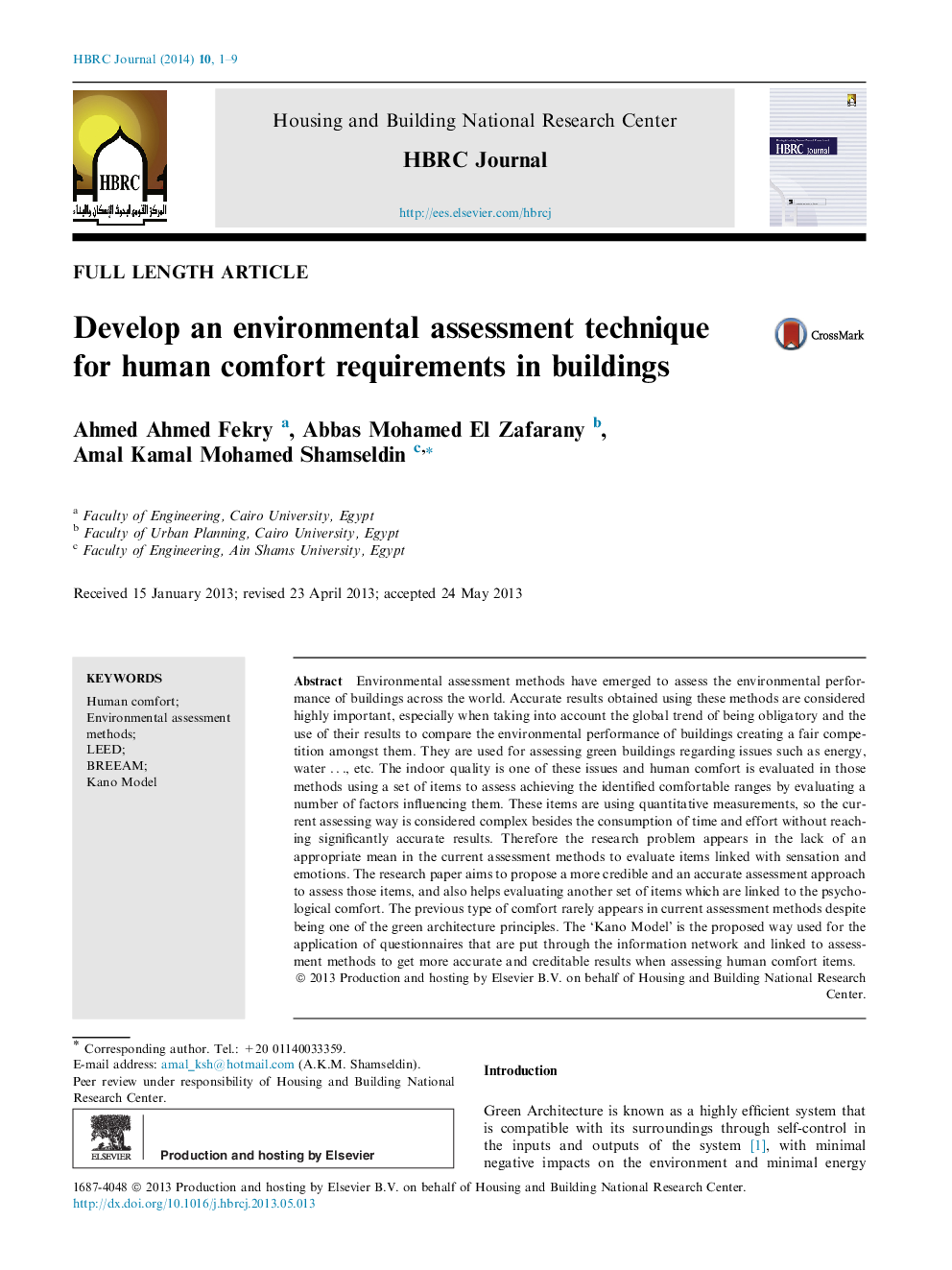| کد مقاله | کد نشریه | سال انتشار | مقاله انگلیسی | نسخه تمام متن |
|---|---|---|---|---|
| 274676 | 505363 | 2014 | 9 صفحه PDF | دانلود رایگان |
Environmental assessment methods have emerged to assess the environmental performance of buildings across the world. Accurate results obtained using these methods are considered highly important, especially when taking into account the global trend of being obligatory and the use of their results to compare the environmental performance of buildings creating a fair competition amongst them. They are used for assessing green buildings regarding issues such as energy, water …, etc. The indoor quality is one of these issues and human comfort is evaluated in those methods using a set of items to assess achieving the identified comfortable ranges by evaluating a number of factors influencing them. These items are using quantitative measurements, so the current assessing way is considered complex besides the consumption of time and effort without reaching significantly accurate results. Therefore the research problem appears in the lack of an appropriate mean in the current assessment methods to evaluate items linked with sensation and emotions. The research paper aims to propose a more credible and an accurate assessment approach to assess those items, and also helps evaluating another set of items which are linked to the psychological comfort. The previous type of comfort rarely appears in current assessment methods despite being one of the green architecture principles. The ‘Kano Model’ is the proposed way used for the application of questionnaires that are put through the information network and linked to assessment methods to get more accurate and creditable results when assessing human comfort items.
Journal: HBRC Journal - Volume 10, Issue 1, April 2014, Pages 1–9
